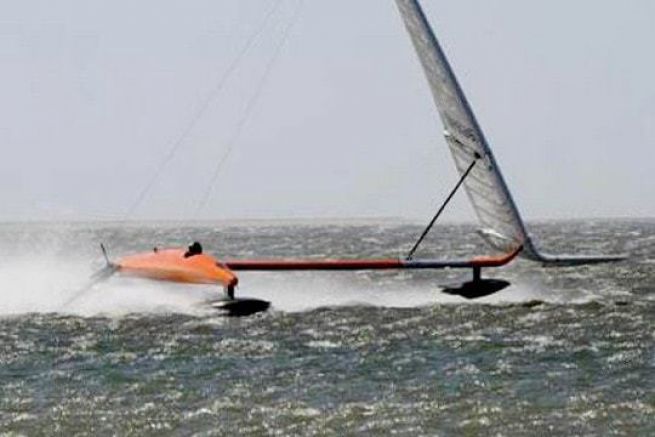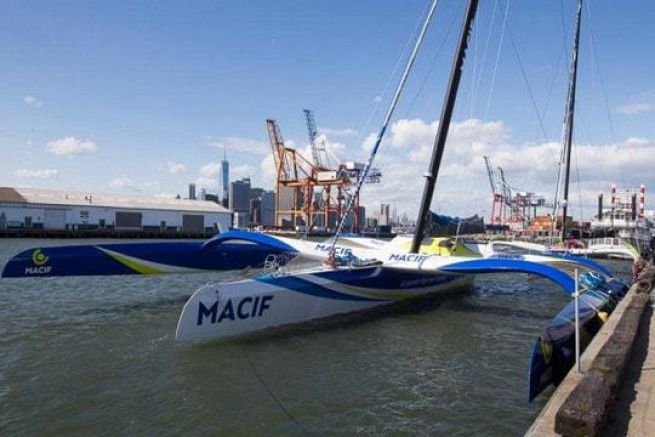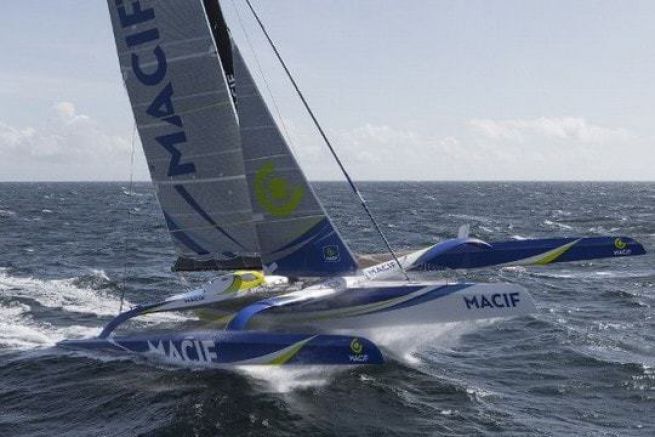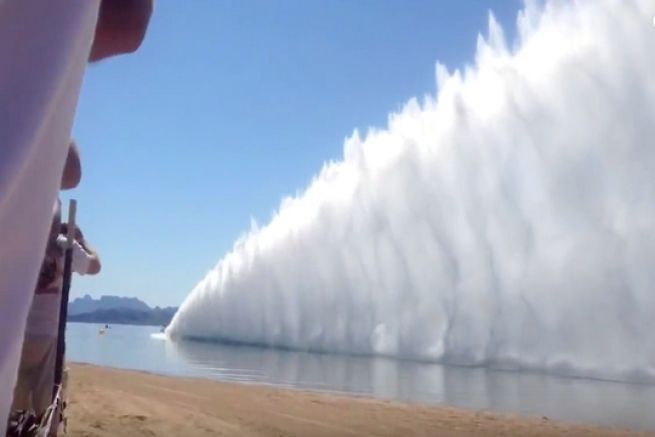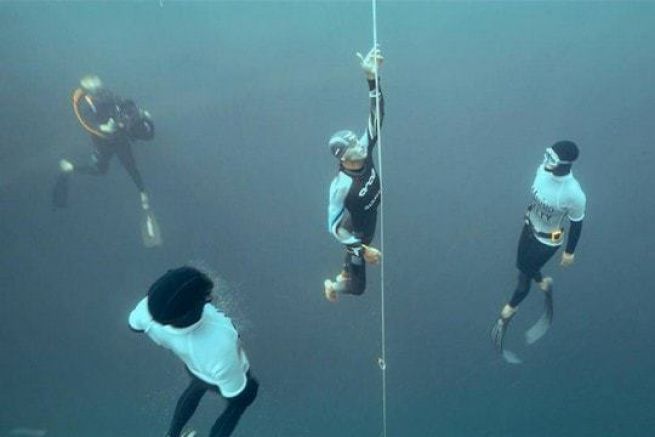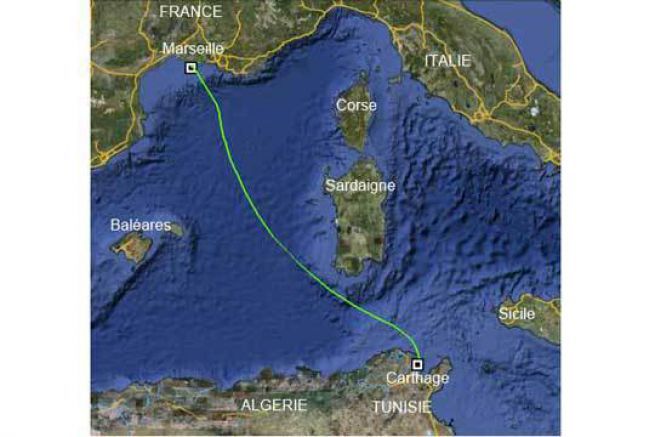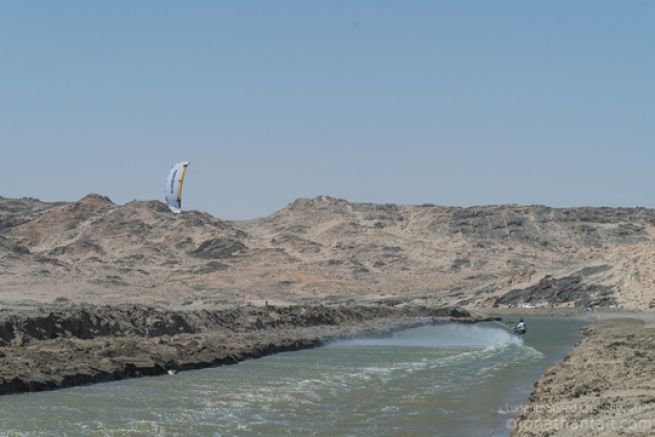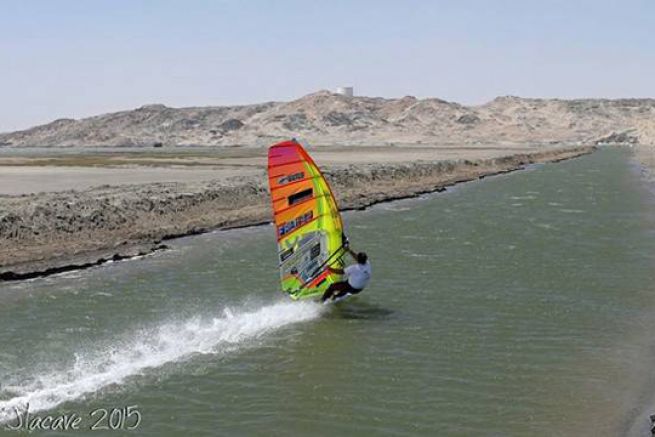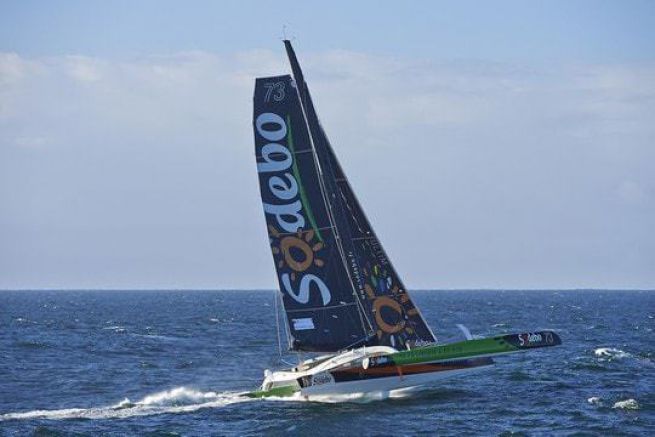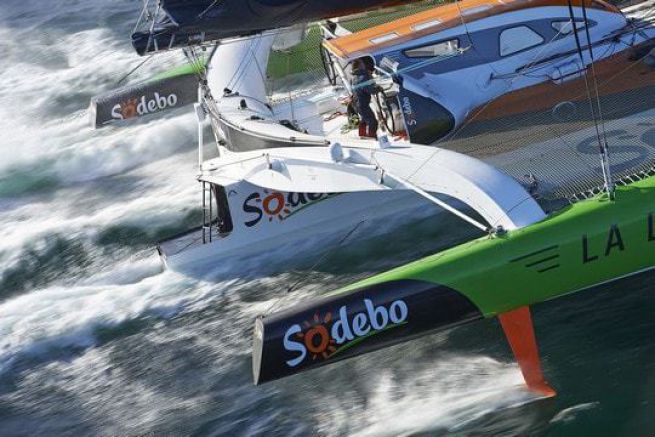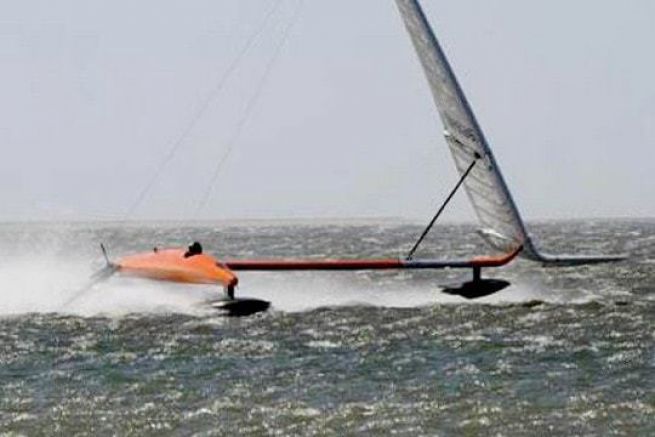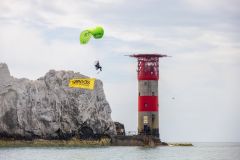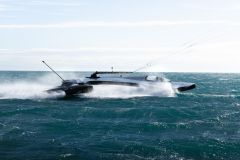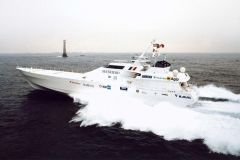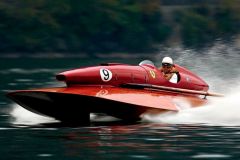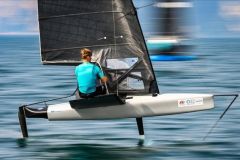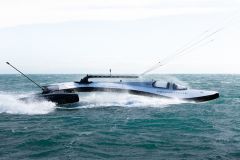The World Sailing Speed Record Council was born in 1972 in Portland, the birthplace of sailing records. This authority was to provide an accurate and precise measurement of the speeds obtained in navigation. And its creation is more than surprising since it results from the claim of a painting company that boasted of having painted the fastest boat in the world.
The latter had made a special graphite (black) paint for the catamaran Class C Lady Helmsman (which was certainly very fast). She then announced that the vessel had reached a speed of 30 knots. Bernard Hayman, editor of Yachting World, was so upset by the announcement that he demanded to know how the speed had been measured. A similar speed was sailing at the same speed as a car (55.5 km/h) on Southend-On-Sea Drive in England.
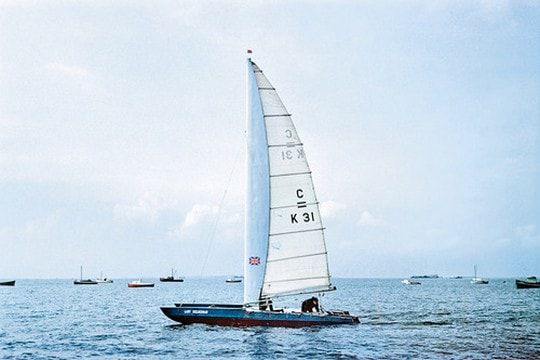
Lady Helmsman
It was ridiculous at the time, but the magazine then decided to propose a new event entirely devoted to speed measurement. The Royal Yachting Association agreed to organize it and after extensive research, decided that the port of Portland, England, was the best place given its geography. The navigation distance was determined at 500 m.
Very quickly, it was anticipated that the World Sailing Speed Record could be attempted from all over the world. The first event took place in 1972 and was won by Crossbow - a 60-foot asymmetrical catamaran - specially designed and built for newspaper owner Timothy Colman. It reaches a speed of 26.30 knots, measured by the chronometer on a course marked by a circle of buoys. A record time that allowed to challenge the so-called"record" of Lady Helmsman.
Colman set the record for six years before being dethroned by the second Crossbow, which finally reached 36 knots. Its closest rival, the hydrofoil Icarus, only reaches maximum speed of 28.15 knots.
Increasing the record even further
If the only record holder remained an extremely expensive multihull, the enthusiasm could have waned. But he was saved by two things:
- A keen interest for this new game in other countries, and in particular in France and Holland
- The invention of windsurfing.
Windsurfing was inexpensive, potentially fast and easy to carry on the roof of his car. Thus, in 1986, the Frenchman Pascal Maka stopped the Crossbow era with a speed of 38.86 knots, which he did not in Portland, but in Sotavento in Spain.
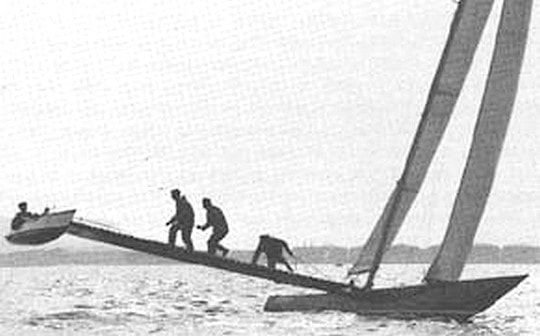
Crossbow
Later, the"French-Tech" based in Sainte-Marie-de-la-Mer built sailboats that increased their speed dramatically, reaching 50 knots in 2008! The organization had long since changed from being an event manager to a global ratification authority, providing rules and monitoring all possible records in navigation. Then, finally, it was Namibia's turn to be chosen for its record possibilities.
Later, there was a period when the world record was broken from the top, thanks to a non-stop battle between boards and boats. In Australia, Lindsay Cunningham and her team's tireless efforts were finally rewarded when Macquarie's innovation reached 50 knots in 2009. In 2011, the British sailboat Vestas Sailrocket 2 was brought to Namibia for a record attempt. In France, the design of the Hydroptère was rewarded by an increase in the record with 50.17 knots... The following year, the kiteboarder Rob Douglas reached 55 knots in Namibia.

 /
/ 